Latest News
Kitchen Chat and more…
Kitchen Chat and more…
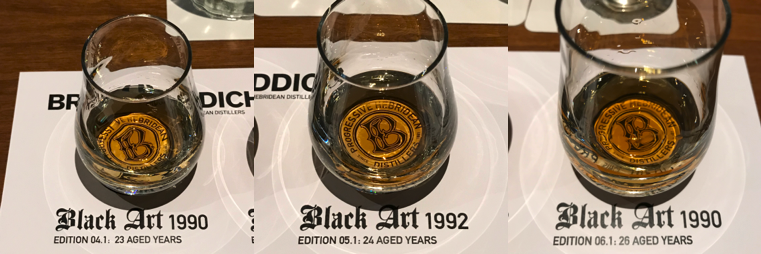
Photo Credits: WhiskyGeeks.sg
Bruichladdich has an excellent series of whiskies named Black Art. Starting from Black Art 1.1, the series is as mysterious as the dark arts (hence the name)! As we go through the series, we arrived at Black Art 6.1 – the second Black Art series that new head distiller, Adam created.
There was a Masterclass for the Black Art 6.1 during Whisky Live, where participants get to drink the whisky before anyone else does! However, the real media launch of this mysterious dram happened on 21 Nov 2018, at Jigger and Pony.
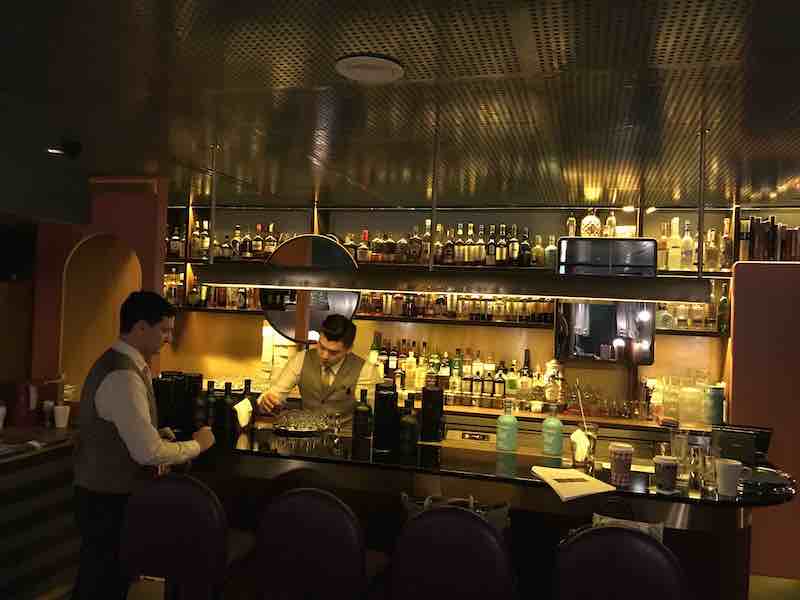
Photo Credit: WhiskyGeeks.sg
It was a grand tasting at Jigger and Pony considering how lovely the bar is. Bruichladdich has a small set up near the bar for about 15 pax, and we can all sit comfortably with our drams. The bottles were set up at the bar area (see above), and we even get a delicious dram of Classic Laddie before we start! Well, they offered a highball, but Chloe poured me a large dram of Classic Laddie after she knew that I had a long day ahead and did not want to mix my drinks!
We had the chance to revisit Black Art 4.1 and 5.1 during the session, and of course, we had to compare between the three. Black Art 6.1 is artfully created by Adam to be different from his previous rendition of Black Art 5.1. In my humble opinion, I think that Black Art 6.1 is more similar to the 4.1. The 4.1, of course, was created by Jim Mcewan, Bruichladdich’s previous head distiller.
As usual, Chloe waxed lyrical about Bruichladdich and what the distillery has achieved so far. She knew that most of us probably could repeat what she said since we have been to various media launch, and hence, gave us something new to be excited about besides the whiskies.

Photo Credit: WhiskyGeeks.sg
Chloe revealed that Bruichladdich is building new warehouses, and it is currently the most significant construction on Islay! If you are heading that way, remember to visit Bruichladdich Distillery!
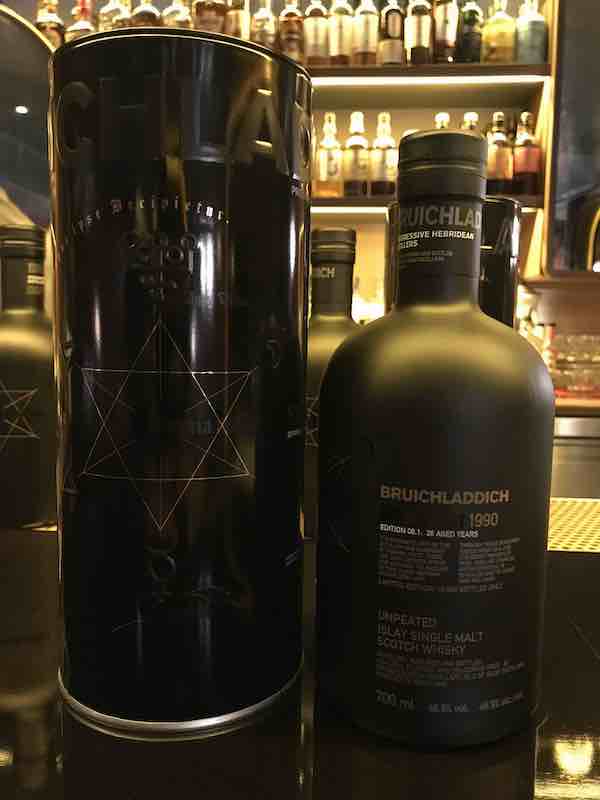
Photo Credits: WhiskyGeeks.sg
Nose: The initial nose is full of mellow toffee, honey, vanilla, cereal, nuts and chocolates, coming in layers by layers. There is a hint of spice hiding behind the sweet nose.
Palate: I get toffee, nuts, chocolates and honey with my first sip. The oily mouthfeel is silky and makes the whisky very approachable. The second sip gets me all the above, in deeper concentration. It also brings out a gentle ginger spice that I did not get on the first sip. Delicious!!
Finish: 6.1 has a long and floral finish, with nuts and gentle ginger spice along the back of the throat.
Compared to the 5.1, Black Art 6.1 is richer and has strong flavours. I prefer this to the 5.1 as I like the richer notes to it. There may be hints of sherry notes as well, but too faint to catch it properly.
It is yet another great whisky from Bruichladdich, so grab your bottle before it is gone!! I understand from Chloe that it is retailing at all major stores in Singapore, so ask, or regret forever!
Glengoyne is a beautiful Highland Distillery with a warehouse just across the road in the lowlands. They have a long reputation of using quality casks and produces whiskies that are sweet, unpeated and sherried. It came as no surprise to me when M&S chose to feature a 14-year-old in their range! Glengoyne holds many special memories for me – Jonathan Scott conducted my first proper whisky tasting at The Single Cask @CHIJMES, and I had Glengoyne 21 year old as a gift on my 21stbirthday from a generous friend!
With the help of Zerlina from WhiskyGeeks and Jonathan Scott of Glengoyne Distillery, I got an exclusive tour to learn the production of this delicious golden nectar! As a way of saying thanks, I asked Zerlina if I could write an article for WhiskyGeeks to share my experience at Glengoyne, and so, here it is!
Glengoyne is a mid-sized distillery producing approximately 1 million litres per year. Glengoyne has two water sources. It uses the water from Loch Carron for production and Blairgar Burn for heating and cooling. 100% of the malt used is the Concerto variety coming from Simpsons, a malting company just to the right of Edinburgh. That might change in the future as more distilleries start switching to the Laureate variety. Some other distilleries have allegedly had their highest yield in their wash during experiments, so this seems promising for the future of this barley variety!
The mill crushes the malted barley to grist to break open the husk of the grain. The rollers of the mill grind barley to a standard ratio of approximately 20% Husk, 10% Flour, and 70% Grist. This ratio is vital to prevent clogs and blockages in the pipes. The grist mixed with water to form a mash, with a porridge consistency, which is similar to adding hot water to a bowl of oatmeal. A traditional rack style mash tun, which has rakes turning continuously, mixes the “porridge” mash. The hot water helps dissolve some of the soluble sugars and to start breaking down the starch in the barley into sweet soluble sugar. This process separates the sugars from most of the solids. Hot water is added three times at Glengoyne to extract almost all the sugars from the mash. Each stream of water is hotter than the previous one.
At Glengoyne, the first stream of water to mix with the grist is at 64oC, followed by a second stream of water at 78oC. The first and second streams break most of the starch in the grist into sugar. The third and final water stream comes approximately between 88-90oC to take away any remaining sugar. The process strips almost all the sugar in the grist, much like how hot water dissolves more chocolate and much faster than cold water. The temperatures of the water streams gradually increase so as not to change the natural qualities of the malted barley.
The sugared water from the first and second streams is called wort. The distillery cools the wort to below 20oC before channelling it to the washbacks for fermentation. The temperature is crucial as yeast cannot survive in high heat. The sugary liquid from the third stream of water is called the sparge. Sparge is very hot and have low sugar content. The sparge isn’t wasted though; it is piped away to be used as the first stream for the next mash at 64oC. The remaining barley solids in the mash tun is called the draff, and though it has almost no sugar, it is high in proteins. The draff is sold to farmers as cattle feed. It builds a very strong relationship between Glengoyne and the farmers around the area. Draff also grows healthy cows and produces delicious Scottish beef!
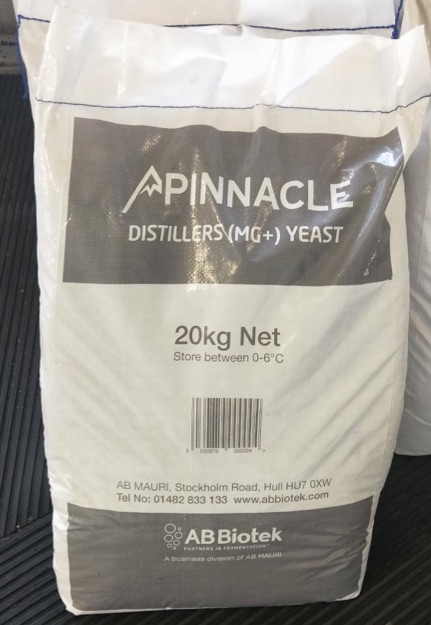
A 20kg bag of Pinnacle Distillers Dry Yeast (MG+) – Photo by Hongfu Teo
The distillery uses Douglas Fir Wooden Washbacks for fermentation. Douglas Fir trees have fewer branches with lesser weak points, making them strong and lasting as washbacks. Each washback can last a couple of decades.
Each mash pipes into one of six Douglas Fir Wooden Washbacks for a fermentation period of approximately 56 hours. The team adds MG+ Pinnicale Dry Yeast into the washback to start the fermentation process. The yeast will change the dissolved sugars in the wort into low strength alcohol. This fizzy beer-like liquid brewed in the washbacks is called wash, and when the team completes the fermentation, the wash has an alcoholic strength of approximately 8.5% abv.
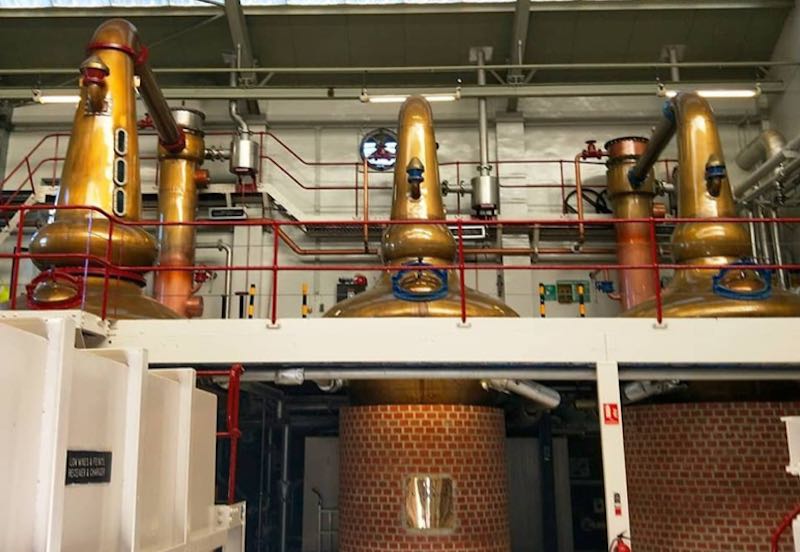
Glengoyne’s Stills (from left) – Wash Still and 2 Spirits Stills (Photo by Hongfu Teo)
This wash is then sent to the wash still, which is the bigger pot still with three windows on the left of the photo. The wash still takes away some of the water and all the solid particles. This is done by heating the liquid until it bubbles. The vapours rise to the top of the pot still and down the lyne arm, to a shell and tube condenser that turns the vapour into liquid. The distillate from the wash still, known as low wine, flows down the lyne arm at approximately 16L/min. This low wine has an abv of 24%. The low wines enter the tank called the low wine receiver.
The stillmen have to ensure that the wash does not boil over the still and go down the lyne arm by monitoring the bubbles constantly. This is to ensure that the low wine does not have solid particles. The window on the still is usually the indicator that this still is a wash still.
The stillmen split the low wines between the two small onion-bulb Spirit Stills (in the picture above) to be distilled a second time. The second distillation increases the alcohol percentage of the final product. The pair of spirit stills is on the right of the photo above. The distillate comes out of the Spirit still in three stages: the Foreshots, the New-Make and the Feints (aka the Head, the Heart and the Tail).
The foreshots are cloudy and undesirable as it contains a lot of alcohol and lighter flavors. At approximately 75% abv, the distillate becomes clean and clear and smells sweet. This is the start of the “heart” or new make. The stillmen collect the distillate from this moment as the new make. Heavier flavours appear at approximately 65% and the stillmen direct the distillate to feints. The foreshots and feints are then channelled into the still again as there is still a significant amount of alcohol in them. The figures of 75-65% are approximate because temperature affects the reading. Stillmen usually use charts to ensure that the Glengoyne new make spirit is sweet and clean.
Glengoyne also has the slowest distillation from the Spirit Still at a volumetric flow rate of 5L/min. This slow distillation allows the liquid to have prolonged contact with the copper stills. This copper contact takes away sulfur compounds, which is another reason why the Glengoyne spirit character is so unique, and clean.
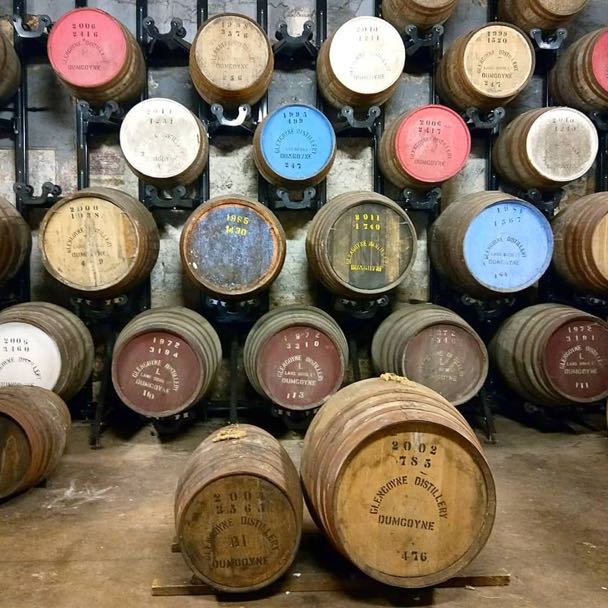
Casks on display at Glengoyne (Photo by Hongfu Teo)
The new make is usually around 71% abv, and Glengoyne watered it down to 63.5% before filling it into a cask. Glengoyne has a 3-fill cask policy so after the third use; they stop using the cask. This policy ensures that every cask provides adequate maturation to the new make. The distillery shipped Oloroso sherry casks whole from Spain and seasoned them for at least two years. The process also strips the rougher tannins off the wood, giving the casks more Oloroso character! The casks give Glengoyne whiskies notes of raisins, dried fruit, nuttiness, chocolate, cinnamon and Christmas Cake! The sherry casks also provide all of Glengoyne single malt’s colour; the distillery does not use E150a caramel colouring!
It was a lovely trip to the Glengoyne distillery and a one which I learnt a lot from. Thank you, Jonathan Scott, for the insightful tour! I am sure that I will be back again in future!
All this talk of Glengoyne is making me thirsty. Now, excuse me as I pour myself a dram of my favourite Glengoyne Core Range Bottling; the 21yo aged in 1stfill Oloroso cask… for 21 years!
Slainté!
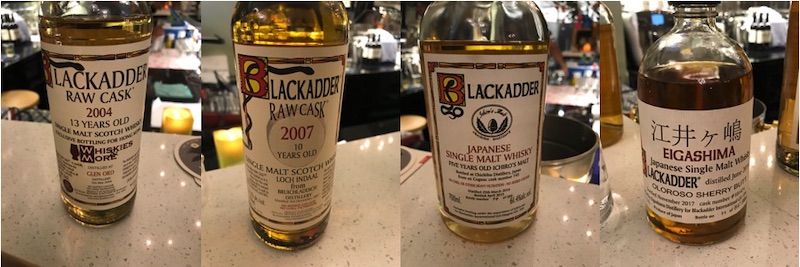
Blackadder is a popular independent bottler that many whisky lovers around the world is familiar with. As of 14 November 2018, Singapore has the honour of finally having a Blackadder distributor in Singapore! We were invited to a well-organised launch party by Jeremiah Kee, founder of Interco-mle. His company is the sole distributor for Blackadder in Singapore.
The launch party was held at Laughing Juice, a well-crafted bar/event location at Orchard Boulevard. The decoration of the bar is classy, and it comes with a well-stocked bar too!
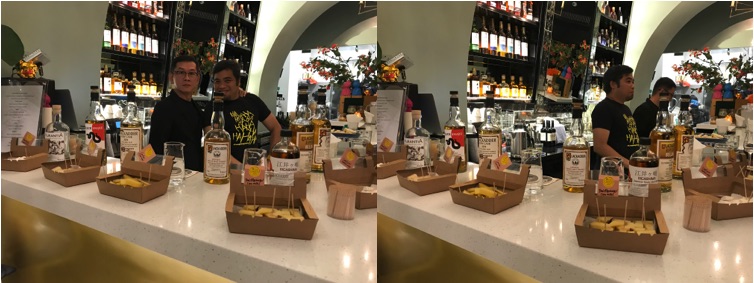
When I arrived at the bar, there were already lots of people mingling around the area. I was greeted by our host, Jeremiah, and then the whiskies stared at me in the face! Distracted by the whiskies, I believe I ignored a couple of friends who were waving at me. Hahaha…my apologies, my friends.
Up for grabs were some excellent Blackadder whiskies, including a Glen Ord (Singleton, anyone?) and a Loch Indaal (Bruichladdich!!). There were also two Japanese whiskies, one from the famed Chichibu distillery, and the other is an Eigashima. (Picture at the top)

The event started officially with Jeremiah doing a short introduction to his company, Interco-mle and Blackadder. We understood that “Interco” means the International Code of Signals, and “MLE” simply means that “the patient has had too much alcohol”. Jeremiah obviously has the “mle” condition, considering his passion for whisky and Blackadder! It also revealed Jeremiah’s background – if you know it.
Robin Tucek and John Lamond founded Blackadder in 1995 and named the company after the historic Scottish figure Bishop John Blackadder. The company’s bottlings are mostly single casks and are neither chill-filtered or coloured. To drive the point of the natural state of the whisky, the company bottles their whiskies in clear bottles to ensure that customers can see the whisky clearly during their purchase.
Blackadder bottlings have standard ranges such as the “Limited Edition” and the “Auld Edinburgh”. It also offers the “Raw Cask” series from 2000, which showcase whiskies that are bottled directly from the cask. The bottling does not filter the whisky in any way, which results in some sediments in the whiskies such as fragments of wood.
For Singapore, Jeremiah imported many of the “Raw Casks” series as they are premium and suitable for our market here. We tasted two of these “Raw Casks” bottling – a Glen Ord 2004 13 Years Old, bottled for Hong Kong Whiskies More and a Bruichladdich (Loch Indaal) 2007 10 Years Old. While the Glen Ord reminded me of a Singleton whisky, it has more flavours and gives a better punch than the regular Singleton that we get in the market. The Bruichladdich, on the other hand, is excellent. There is a bite to the palate at first, but once the whisky opened up, the distillate shines through beautifully. A nose of cereal and hay romances me before the palate of sweetness engulfs the tongue in a tug of war. The finish is long and dry, lingering long after the whisky is gone.
As we are all aware of, Japanese whiskies have become the holy grail of whiskies these days. It is, therefore, an impressive feat for an independent bottler to get his hands on Japanese casks. This is what Robin did – Blackadder bottles Japanese whiskies! We tried two different whiskies – an Ichiro’s Malt at five years old from the Chichibu distillery and an Eigashima at three years old. Both are typical Japanese with notes of floral and sweet fruits. Personally, I prefer the Eigashima over the Ichiro’s Malt, but tastes are subjective!
In addition to the various single cask offering, Blackadder has a range of “Black Snake” and “Red Snake”. These whiskies use a Solera system, where aged single malts are placed into a sherry or bourbon cask for further ageing. When the whiskies are deemed ready, Blackadder draws two-thirds of the whisky out from the cask for bottling, while the cask is filled once again with more single malts. There will always be “older” whiskies in the cask, which allows for a balance of flavours and complexity.
We can liken the Solera system to how our hawkers do our braised duck gravy! The pot will always have some “original” gravy left behind, and our hawker uncle or auntie just keep on topping up the liquid. The new flavours of the gravy are stewed together with the flavours of the previous, making the gravy ultra yummy! The rich flavours of the braised duck gravy are similar to the rich flavours that you will get from the Black Snake and Red Snake.
The way to determine the sherry or bourbon cask is through the name. Black Snake is from the sherry cask while Red Snake is from the bourbon cask.
Accompanying Blackadder whiskies were two vendors who are well-recognised for their excellent products. The Cheese Ark is a craft cheese shop which has gained its reputation as the purveyor of fine cheese. Lemuel Chocolate is the provider of fine, craft chocolate from bean to bar. Ronald is the chocolate maker behind Lemuel, and he is a passionate man who is in love with his craft!
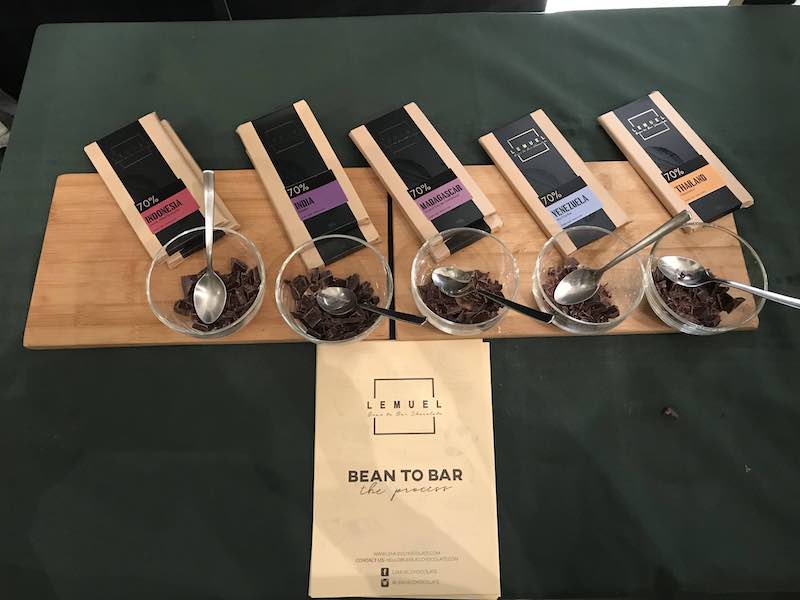
I tried all of Lemuel’s chocolate on offer (because I am a chocolate monster as well as a whisky monster), and they are delicious stuff. It is almost like drinking whisky; the chocolate have finishes! My favourite is the India bar, which is herbal when I first eat it and then turn sweet after I chew it. They paired well with the whiskies too! I think we will probably hear more about Ronald and his chocolates soon!
It was a lovely evening with Blackadder, The Cheese Ark, Lemuel and of course, the Laughing Juice! Before I end the post, let me share future events from Interco-mle and Blackadder.
30 Nov – Laughing Hour @ The Laughing Juice (free-flow drinks and food for a reasonable price!!)
Dec 2018 – First monthly tasting of Blackadder (date is not firmed yet, so follow Interco-mle on Facebook and Instagram!)
Thank you, Jeremiah, for hosting such a beautiful launch, and we looked forward to more of your tastings!
11311 Harry Hines Blvd
Dallas, TX, United States
(555) 389 976
dallas@enfold-restaurant.com
